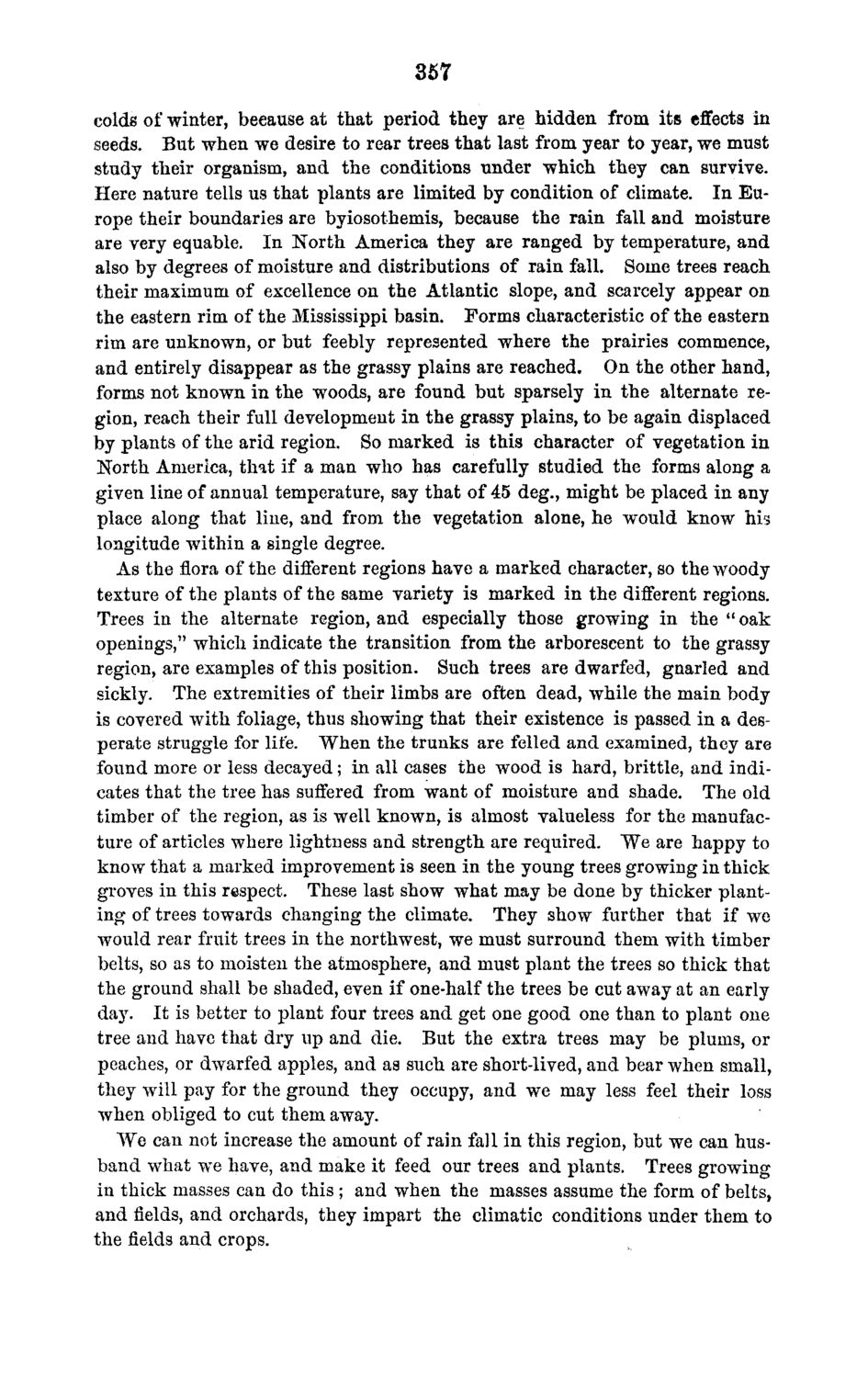| |
| |
Caption: Board of Trustees Minutes - 1870
This is a reduced-resolution page image for fast online browsing.

EXTRACTED TEXT FROM PAGE:
357 colds of winter, because at that period they are hidden from its effects in seeds. But when we desire to rear trees that last from year to year, we must study their organism, and the conditions under which they can survive. Here nature tells us that plants are limited by condition of climate. In Europe their boundaries are byiosothemis, because the rain fall and moisture are very equable. In North America they are ranged by temperature, and also by degrees of moisture and distributions of rain fall. Some trees reach their maximum of excellence on the Atlantic slope, and scarcely appear on the eastern rim of the Mississippi basin. Forms characteristic of the eastern rim are unknown, or but feebly represented where the prairies commence, and entirely disappear as the grassy plains are reached. On the other hand, forms not known in the woods, are found but sparsely in the alternate region, reach their full development in the grassy plains, to be again displaced by plants of the arid region. So marked is this character of vegetation in North America, that if a man who has carefully studied the forms along a given line of annual temperature, say that of 45 deg., might be placed in any place along that line, and from the vegetation alone, he would know his longitude within a single degree. As the flora of the different regions have a marked character, so the woody texture of the plants of the same variety is marked in the different regions. Trees in the alternate region, and especially those growing in the " oak openings," which indicate the transition from the arborescent to the grassy region, are examples of this position. Such trees are dwarfed, gnarled and sickly. The extremities of their limbs are often dead, while the main body is covered with foliage, thus showing that their existence is passed in a desperate struggle for lite. When the trunks are felled and examined, they are found more or less decayed; in all cases the wood is hard, brittle, and indicates that the tree has suffered from want of moisture and shade. The old timber of the region, as is well known, is almost valueless for the manufacture of articles where lightness and strength are required. We are happy to know that a marked improvement is seen in the young trees growing in thick groves in this respect. These last show what may be done by thicker planting of trees towards changing the climate. They show further that if we would rear fruit trees in the northwest, we must surround them with timber belts, so as to moisten the atmosphere, and must plant the trees so thick that the ground shall be shaded, even if one-half the trees be cut away at an early day. It is better to plant four trees and get one good one than to plant one tree and have that dry up and die. But the extra trees may be plums, or peaches, or dwarfed apples, and as such are short-lived, and bear when small, they will pay for the ground they occupy, and we may less feel their loss when obliged to cut them away. We can not increase the amount of rain fall in this region, but we can husband what we have, and make it feed our trees and plants. Trees growing in thick masses can do this; and when the masses assume the form of belts, and fields, and orchards, they impart the climatic conditions under them to the fields and crops.
| |